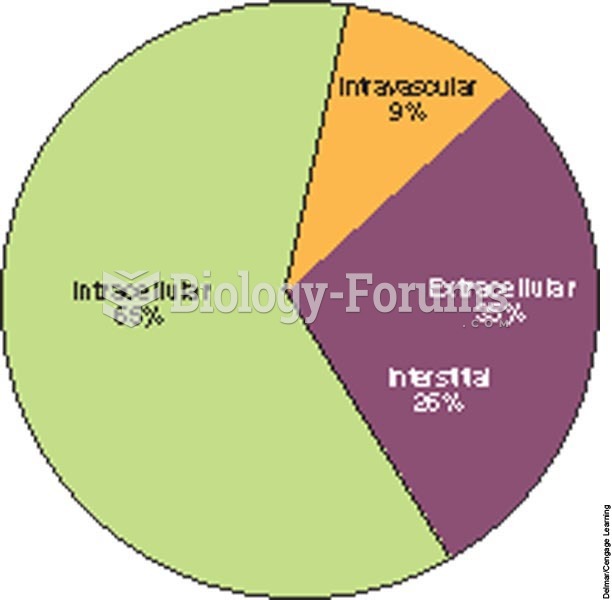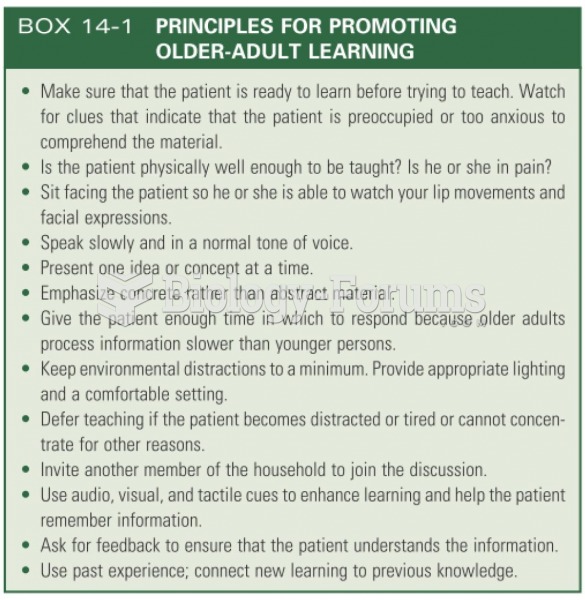|
|
|
Asthma attacks and symptoms usually get started by specific triggers (such as viruses, allergies, gases, and air particles). You should talk to your doctor about these triggers and find ways to avoid or get rid of them.
Human stomach acid is strong enough to dissolve small pieces of metal such as razor blades or staples.
More than 30% of American adults, and about 12% of children utilize health care approaches that were developed outside of conventional medicine.
After 5 years of being diagnosed with rheumatoid arthritis, one every three patients will no longer be able to work.
Signs of depression include feeling sad most of the time for 2 weeks or longer; loss of interest in things normally enjoyed; lack of energy; sleep and appetite disturbances; weight changes; feelings of hopelessness, helplessness, or worthlessness; an inability to make decisions; and thoughts of death and suicide.






